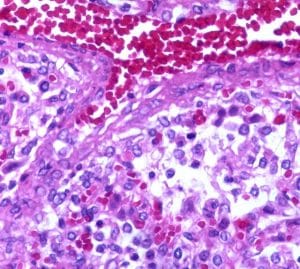
To catch up, please glance back at “Obesity Villains Reconsidered” and/or “Obesity Villains Exonerated.” These posts are based on a paper that cast doubt on or debunked some commonly held beliefs about the causes of obesity and supported others.
Either way, it encompassed some interesting material and provided a starting place to reassess various bits of received wisdom, because…
[…] scientists widely and readily acknowledge that multiple factors contribute to obesity including but not necessarily limited to genetic, dietary, economic, psychosocial, reproductive, and pharmacologic factors.
Among other ideas, the authors reconsidered the notion of the heavily criticized institution known as the “built environment.” In one case, they found a study that examined two racially same but economically different neighborhoods, and concluded that “levels of leisure walking and physical activity were not higher, and rates of obesity were not lower in the non-poor neighborhood with better maintenance, more sidewalks and recreational facilities.”
In another upset, the authors discovered that although high fructose corn syrup has been enthusiastically demonized, an American Medical Association position paper said “it appears unlikely that HFCS contributes more to obesity or other conditions than sucrose.” Similarly, although anti-obesity warriors hate vending machines, and devote a lot of energy to lobbying against their presence in schools, the actual evidence against the machines as obesity villains is underwhelming:
Our point is merely that we do not have conclusive evidence that the big two or their individual elements are the preeminent contributors to obesity. Despite the lack of solid evidence that clearly demonstrates the “culprits” are chiefly responsible for the obesity epidemic, researchers are quick to blame them even in the public eye…
Such confidence in one “culprit” is then often contradicted by public health proponent[s] advancing their favored target for intervention.
Due to the “complex reality” of the situation, the authors point out that some factors are not actionable in any practical way. For instance, a lot of adults have gotten fat because they quit smoking. But no responsible member of any profession would suggest that anyone should resume the nicotine habit for the sake of weight control.
Regarding the role of bacterial products in regulating metabolism and body weight, a category that has been explored is infection, because…
[…] the possible contribution of infections in the etiology of human obesity is often overlooked. Canine distemper virus (CDV) was the first reported obesity promoting virus… In mice infected with CDV, obesity develops after acute infection has abated and when no virus is detectable.
Also, there is a suspicion that the role played by bacterial products in metabolism and body weight regulation has not been considered. In this area of investigation, a lot of crazy things have been observed. For instance, take visceral fat in chickens. “Paradoxically, the increased adiposity due to SMAM-1 [an avian adenovirus] infection was accompanied by a reduction in serum cholesterol and triglycerides.”
Ad-36 is a human adenovirus capable of increasing adiposity not only in chickens but in non-human primates. In one experiment, it is said to have “increased whole-body insulin sensitivity and enhanced expression of genes involved in the adipogenic and de-novo lipogenesis pathway…” — and it spreads very fast.
Only a few adenovirus subgroups have been examined relative to adiposity. “Adipogenic potential of remaining the 45 known human adenoviruses has not been tested.” Of course, that was in 2009, so additional research has surely changed the statistic. Still, a search for several keywords reveals that since then, not much seems to have been done toward finding out about the adipogenic potential of the remaining almost four dozen varieties.
A federal government page says,
Sometimes the virus can be shed (released from the body) for a long time after a person recovers from an adenovirus infection, especially among people who have weakened immune systems. This “virus shedding” usually occurs without any symptoms, even though the person can still spread adenovirus to other people.
Just a few more words about human adenoviruses, or HAdVs, which are associated with “an array of diseases”:
HAdV is classified into seven groups (A-F). There are more than 100 serotypes, and approximately 67 serotypes (1-67) are known to be pathogenic in humans… HAdV can evade the immune response and produce persistent or latent infections.
Your responses and feedback are welcome!
Source: “Ten putative contributors to the obesity epidemic,” ncbi.nlm.nih.gov, November 2009
Source: “Transmission, CDC.gov, undated
Source: “Perspective on Adenoviruses: Epidemiology, Pathogenicity, and Gene Therapy,” NIH.gov, August 2019
Image by Dr. Yale Rosen Atlas of Pulmonary Pathology/CC BY-SA 2.0 DEED

 FAQs and Media Requests:
FAQs and Media Requests: 











